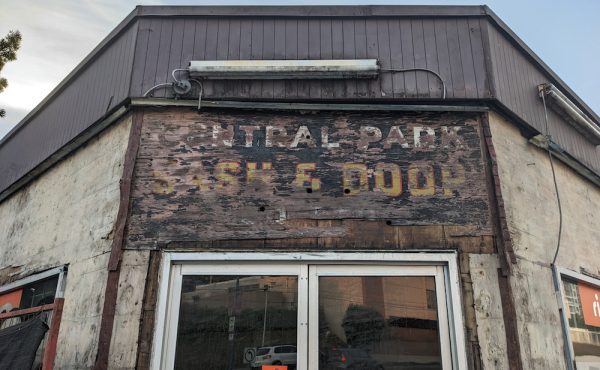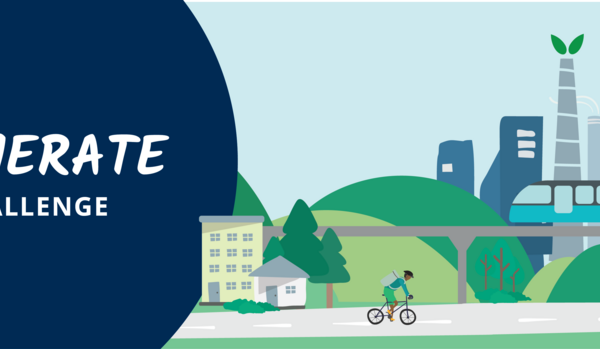 It was a cool experiment, and perhaps North America’s largest traffic trial ever. Take one auto-oriented-but-making-progress city and for 17 days remold it into a transit city. Happily, it worked beyond anyone’s expectations. Now it’s time to take what we’ve learned to improve Vancouver’s transportation system.
It was a cool experiment, and perhaps North America’s largest traffic trial ever. Take one auto-oriented-but-making-progress city and for 17 days remold it into a transit city. Happily, it worked beyond anyone’s expectations. Now it’s time to take what we’ve learned to improve Vancouver’s transportation system.
By John Calimente, re:place Magazine
During the 2010 Winter Olympics, Vancouver was transformed. People flooded onto the transit system, particularly the Canada, Expo, and Millennium Lines. Additional SkyTrain cars, buses, West Coast Express trains, and a Seabus were added. Lane closures in and around the downtown core dramatically curtailed traffic. And many more people were out walking and cycling than would be normal in mid-February.
The Plan
The simple goal was to achieve a 30% reduction in motor traffic in downtown Vancouver. This would be achieved by introducing road and parking restrictions while simultaneously increasing transit service. VANOC put in $17 million in order to fund this expanded service. Road capacity was reduced by 50% downtown and 20% for the city as a whole. The Georgia Viaduct was closed. Drivers were urged not to travel downtown between during peak times.
Pressure was also taken off transit by the closure of universities and many people taking holidays during the Olympics. But no one anticipated the huge surge of visitors that ended up taking transit to the downtown core. Expo, Millennium, and Canada Lines ended up running all of their trains most of the day, a total of 48 extra cars per day. As well, 160 on-demand buses were added. The West Coast Express added a total of over 100 additional trips at midday, evenings, and weekends. Bus frequency was also increased on many routes at all hours of the day. TransLink and City of Vancouver staff were on hand to provide help on using the transit system and direct visitors to Olympic venues.
The Numbers
Public Transit: TransLink had expected a 20% lift in ridership, meaning about 960,000 trips daily compared to the normal average of 800,000 trips per day. Instead, ridership jumped by 31%, with an average of 1.6 million boardings per day. The results are summarized on TransLink’s website. Bus ridership increased by 8% over the average weekday. Rail lines fared even better – boardings jumped by 64% over the normal weekday on the Expo/Millennium Lines, 118% on the Canada Line, 119% on the SeaBus, and 58% on the West Coast Express.
Weekends saw even bigger increases, as fewer commuters means lower weekend base numbers. Saturdays on the Expo/Millennium Lines were 226% above normal and Sundays a staggering 348% above normal. The Canada Line was similar, with ridership 203% above normal on Saturdays and 224% on Sundays. The West Coast Express had many people standing on the journey to downtown, with the heaviest load nearly 3,000 passengers when the seated capacity is only 1,250. With the addition of a third SeaBus, ridership jumped 382% on Saturdays and 450% on Sundays. Single-day records were achieved on the Expo/Millennium Lines (567,000 boardings on February 20), the Canada Line (287,000 boardings on February 19), SeaBus (59,000 passengers) and the West Coast Express (2,970 passengers).
The Olympic Line Streetcar saw an astounding 550,000 people take a ride on the 1.8 km line between Olympic Village station and Granville Island in its two months of operation. That’s an average of about 9,000 per day. As a comparison, it took a full 12 months for the 2.1 km South Lake Union Streetcar in Seattle to reach 507,000 riders.
Pedestrians and Cyclists – During the trial, the Burrard and Cambie bridges saw an average of 20,000 pedestrians and 5,000 cyclists per day.
Automobiles – The reduction of car traffic into the downtown core by 30% was easily achieved. I don’t think I’ve ever seen it so quiet in Vancouver on a weekday.
Remarkably, with an average daily ridership of 1.6 million over the 17-day event, Vancouver temporarily had the third-highest transit usage in North America behind only New York and Mexico City. While this is an amazing accomplishment, it is also staggering to think that much, much larger cities in U.S. have such low transit ridership.
So what does this experience tell us?
1) Metro Vancouver’s transit system is amazingly efficient. The 31% jump in ridership was handled as smoothly as could be expected. Of course there were delays and waits, but considering the huge strains put on the system, there were no major failures. Expanded service also encouraged more people to ride the system. As Dale Bracewell with the City of Vancouver explained, “If we provide high-quality service, people will use it.”
2) Increased transit ridership and fewer cars on the road meant that automobile drivers were happy as well. Many, many drivers told me that traffic everywhere in the city was minimal, with the exception of a few routes into the downtown core. Traffic on the Lion’s Gate Bridge moved smoothly even though it was down to only two lanes. Just imagine if all those Olympic visitors had driven their cars everywhere. As Anthony Perl, professor at SFU noted, “If these people were in cars the line-ups would be never-ending.”
Another benefit? Better and faster bus movement. Bus drivers told me that they were constantly having to slow down, because traffic delays are built into their schedules. With reduced volumes of automobiles, buses ran extremely efficiently.
3) When people are unfamiliar with transit, they overwhelmingly chose the easiest systems to understand, which were the rail-based systems. Bus ridership was up only a few percentage points. TransLink staff at the SkyTrain stations said that many people only wanted to hear options that involved SkyTrain. The routing of buses was often seen as too complicated, or unappealing for longer distances.
4) When everyone is riding transit, it becomes more acceptable to the average person. The crowds on the SkyTrain lines didn’t discourage people from riding. On the contrary, it may have actually encouraged more riders. Regardless of what people often say, we like being around other people. But people need to feel comfortable on transit, especially those that rarely take it. Since the transit system was surging with middle-class folks going to Olympic events, it became acceptable for more people to ride.
And there’s also the issue of safety. Many of our SkyTrain stations are absolutely dead at night. While the trains may be busy, the stations are not centres of activity. However, during the Olympics, the critical mass of people using the system also resulted in a greater feeling of safety around stations, with increased security, TransLink staffers giving directions, and simply a greater number of people around. More people riding the system actually encourage greater ridership.
Honestly, there was not really that much going on in downtown Vancouver if you didn’t have tickets to an event. Metro Vancouver residents were basically riding downtown to see the crowds of people milling about.
5) One group that was conspicuous by its presence: families (and extended families). I had never thought about how few families I normally see on transit. Transit in Metro Vancouver is mainly about singles and couples. Complete family groups are a relative rarity. This is one issue that TransLink needs to look at. From a cost and convenience perspective, driving a vehicle is still cheaper and easier that buying tickets for all family members. Hopefully now we’ll at least see more families taking the SkyTrain when they head downtown, but the cost of a using a vehicle will have to increase dramatically before we see any appreciable increase in families on transit. There’s now a group called TripEd that wants to reduce the cost of field trips taken by transit. Perhaps there could be a family pass to encourage families to take transit once in a while?
6) As Richard Campbell points out, was there any buzz at all about the Sea to Sky Highway? No, because it’s almost impossible to have a shared group experience when everyone’s in their separate cars. Just imagine if we had spent the $600 million in highway money on improved train service between Vancouver and Whistler. Or how about between Vancouver and Seattle? That would have been an amazing Olympic legacy. The response would have been incredible: a taste of that can be seen in the popularity of the Rocky Mountaineer, which the Alberta government booked for the duration of the Games
So will we see a long-term impact as a result of the Olympic transportation plan? Signs have not been encouraging so far. The Olympic Line streetcars have already been sent back to Brussels. On March 3rd, the federal government announced that $33 million would be spent in B.C. for road improvements, but no money would go to the Olympic Line or the Evergreen Line.
The Canada Line is an Olympic project that has already shown its value. But now that everyone has hopped back in their cars and life has returned to ‘normal’ in the region, it’s up to us to let the politicians know that we want more investment in public transit. It was amazing to see what Vancouver could look like as a transit city. I’d like to see it again in the not-too-distant future.
***
John Calimente is the president of Rail Integrated Developments. He supports great public transit, cycling, walking, transit integrated developments, and non-automobile urban life. Click here to follow TheTransitFan on Twitter.


